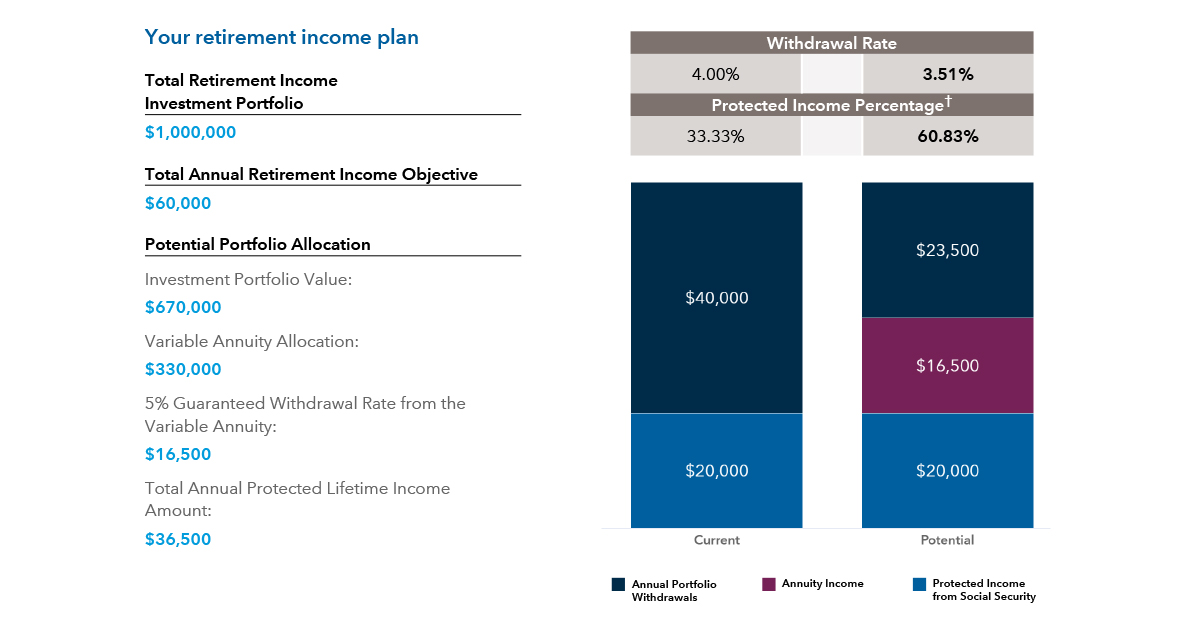Variable annuities are long-term investment products designed for retirement purposes and are subject to market fluctuation, investment risk and possible loss of principal. Variable annuities contain both investment and insurance components and have fees and charges, including mortality and expense, administrative and advisory fees. Optional features are available for an additional charge. The annuity’s value fluctuates with the market value of the underlying investment options, and all assets accumulate tax deferred. Withdrawals of earnings are taxable as ordinary income and, if taken prior to age 59½, may be subject to an additional 10% federal tax. Withdrawals will reduce the death benefit and cash surrender value.
Variable annuities may impose a variety of fees that may affect the growth of the portfolio. Variable annuities have investment and/or withdrawal limitation requirements. Early withdrawals may incur a fee. Guarantees are subject to the claims paying ability of the insurance company.



